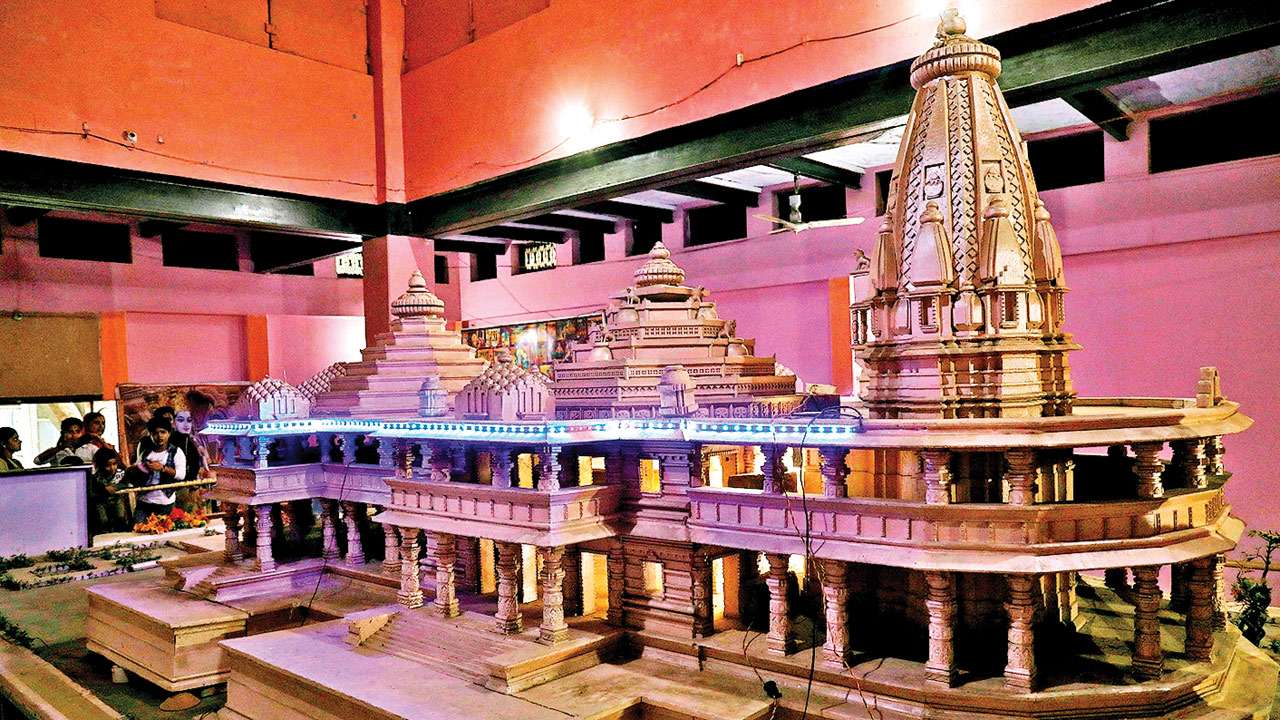
With the Supreme Court constituting a five-member bench under the Chief Justice of India Justice Ranjan Gogoi, it is expected that a decision on the Ram Janmabhoomi temple construction is very much in sight. The NDA government has already requested the apex court for a day-to-day hearing of the pending appeals against the Allahabad High Court judgement, on a three-way split of the disputed land.
In recent months, the temple movement has stepped up pressure on the central government for an early solution. This is bound to create ripples on the political front as the 2019 Lok Sabha polls are round the corner.
The Centre enacting the 10 per cent reservation for the economically backward sections of society has consolidated the BJP base among the segments so far deprived of the benefit of reservation. This is bound to have an impact on the Ram Janmabhoomi movement also since it has taken care of the grievance of a large chunk of the BJP support base who are at the forefront of the Ayodhya agitation.
After over a quarter of a century of the demolition of the disputed structure at Ayodhya’s holy site, a historic and dramatic resolution looks possible if the stakeholders agree to a suggestion mooted by the Shia Waqf Board, the real title-holder of the premise, to relocate the mosque to a nearby Muslim area which would facilitate the building of a magnificent Ram Temple. This was announced in August 2017, by the Shia Waqf Board. The apex court may take cognisance of this.
The Hindus welcomed the offer in the court. But a section of Muslims under the hardline Sunni Board and the Babri Masjid Action Committee has reacted adversely.
The offer of the Muslim community, even if it is coming from only a faction, is the result of the inclusive policy of the Narendra Modi government. Muslims feel safe enough and part of the mainstream for the first time since Independence. This is also the first time since the dispute went to court that the title-holder party or, for that matter, anybody from the Muslim community, has proposed a shifting of the mosque from the disputed land. This in itself is ground-breaking, thus opening a new chapter in Hindu-Muslim relations. This can become the starting point for a negotiated settlement.
The Shia offer has three major aspects: First, technically, only the Shia community has a legal right on the property. The demolished Babri Masjid, though there was no namaz held there for many decades, was a Shia shrine, historically built on a temple that existed till the 14th Century. Second, this is the first time any Muslim individual or outfit is making an offer to relocate the mosque. Third, the starting point for any dialogue has to be the admission of the Hindu claim that the site in discussion is the Ram Janmabhoomi and sacred to Hindus. No solution can come unless these basic premises are brought on the table.
There is yet another important aspect to the Shia Waqf Board suggestion. It has identified, and without mincing words declared, that the hardline sections in the Babri Action Committee are not interested in an amicable solution and are trying to vitiate the social fabric. “It is under the dominant control of hardliners, fanatics and non-believers in peaceful co-existence, who have absolutely no stakes in the case”, it said. Though the Sunni Waqf Board has also petitioned the Supreme Court as a party in the dispute, they have no locus standi as far as the title deed is concerned. The Allahabad HC in its 2011 judgement declared as such. The Allahabad HC had suggested a three-way division of the site with one portion going to the Shia Waqf Board, while accepting the historic Hindu belief that the place in question is Ram Janmabhoomi. The two other parts were given to the Hindu organisation.
The appeal against the high court verdict has been pending in the Supreme Court ever since. In early 2017, responding to a review petition by Dr Subramanian Swamy, the apex court had asked the involved parties to find a solution through mutual consent. Ever since, both Hindu and Muslim leaders have been constantly exchanging notes with Swamy and VHP leader Champat Rai taking the initiative.
At least 200 rounds of negotiations have taken place between the two sides since the issue became hot in the late 80s. A very serious attempt at negotiated settlement was held when Chandrashekhar was Prime Minister in the early 90s. Then historians, archaeologists and scholars from both sides involved themselves in quoting chapter and verse to prove their side. Dr BB Lal, Dr SP Gupta, Dr BR Grover, and many such luminaries then played a role in verifying the historicity of the Hindu claim. Historians like Dr Irfan Habib argued for the other side. In the end, archaeology, history and faith proved the Hindu claim to be much stronger. But the Babri Committee was unrelenting.
What the Shia Board has now done in August 2017 was to call the bluff of this Committee. Mahant Nritya Gopal Das of the Janmabhoomi Nyas had expressed guarded satisfaction over the Shia Board proposal. Subramanian Swamy and the VHP are more exuberant with the development. The Shia Board had suggested a two-judge committee with members of the opposing sides and experts work on the nitty-gritty of the negotiated settlement. Now that the apex court has taken up a fast track process this will help.
With the BJP in power in Uttar Pradesh and at the Centre, the hope of paving the way for the grand temple in Ayodhya is on the ascent. It may not be possible to satisfy all the segments and spectrum of opinion at any stage. The moot point is will the apex court settle it before 2019 polls?
Author is former editor, Organiser